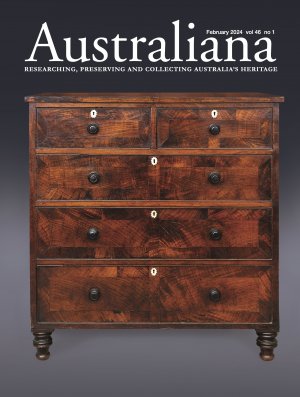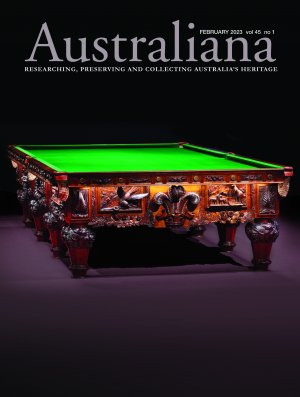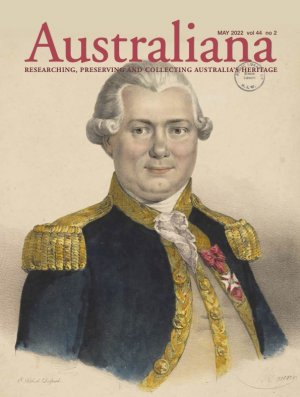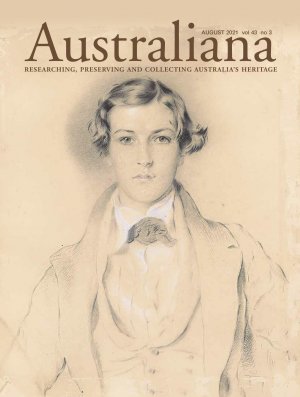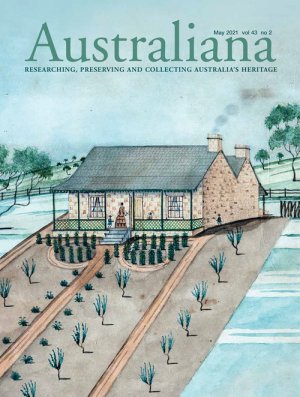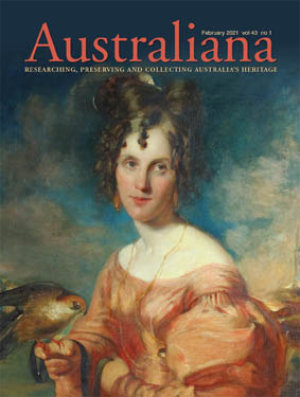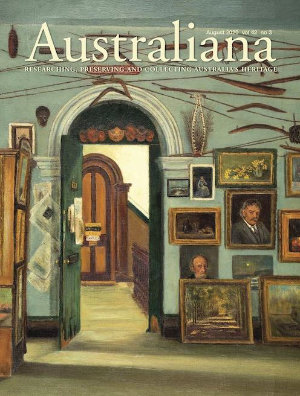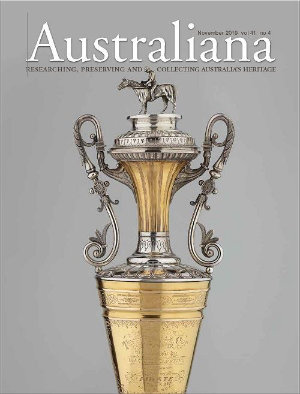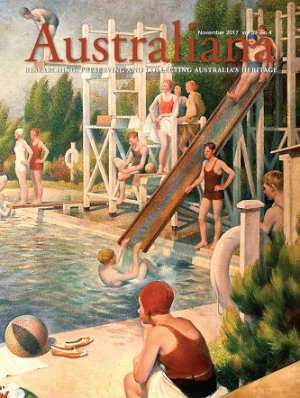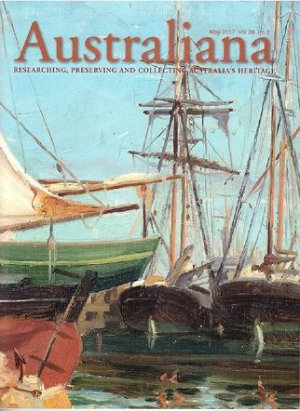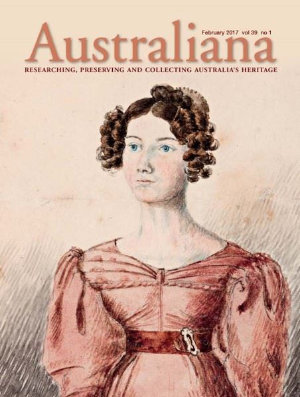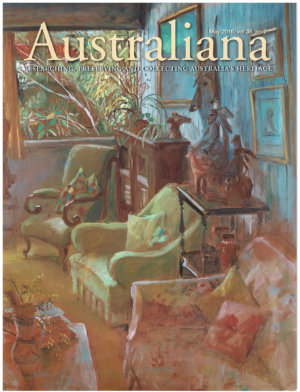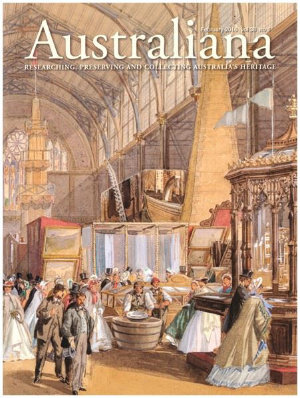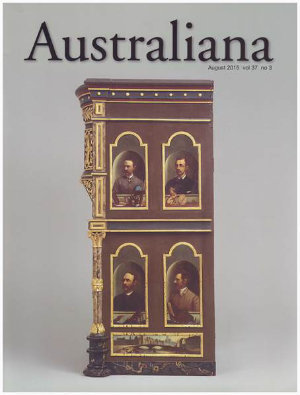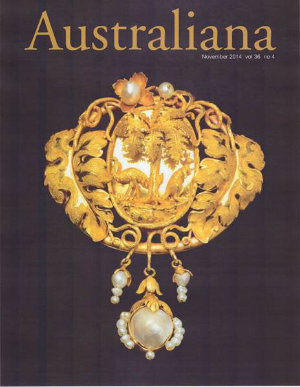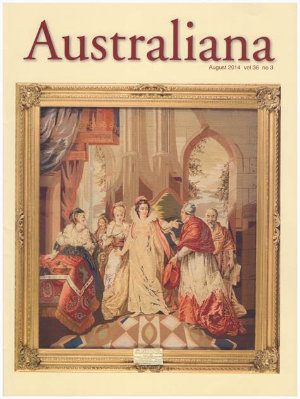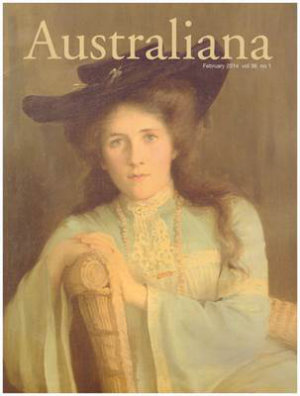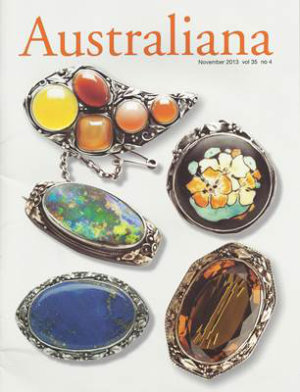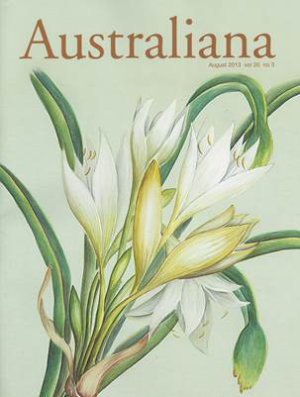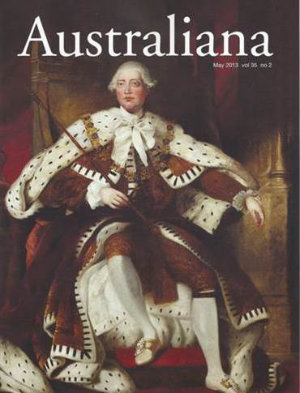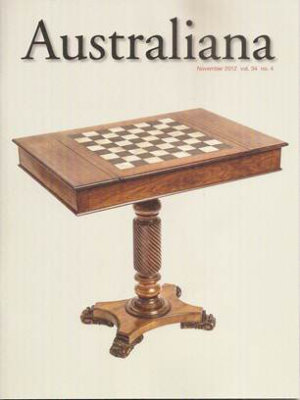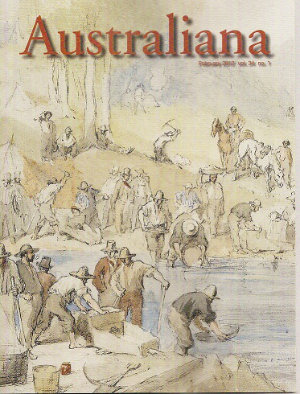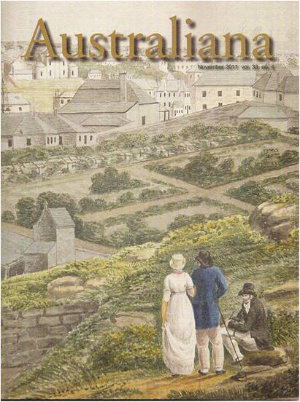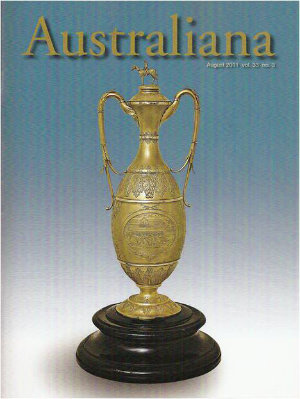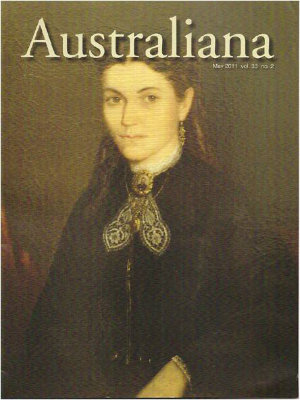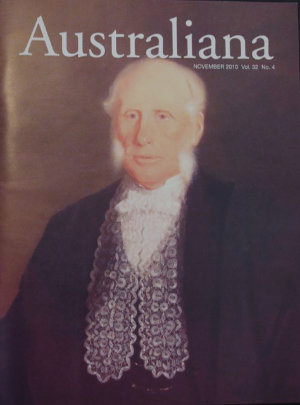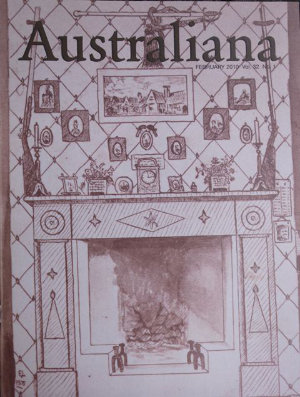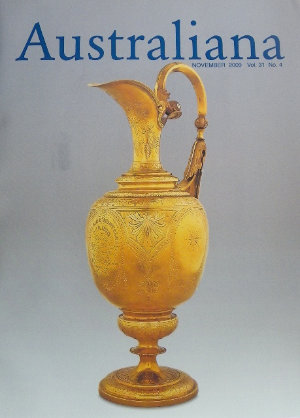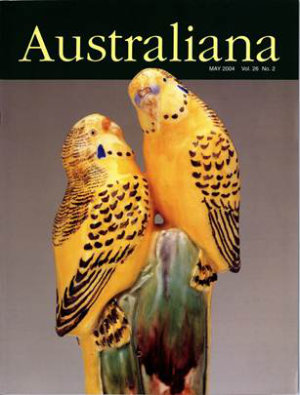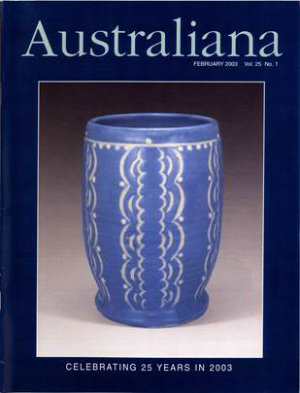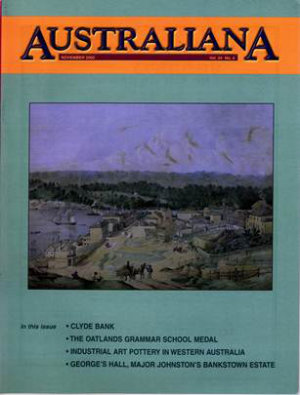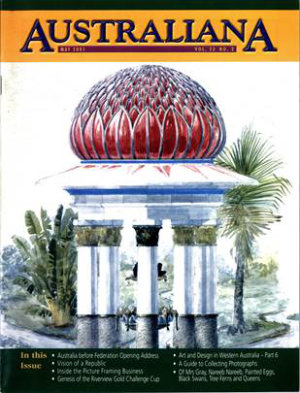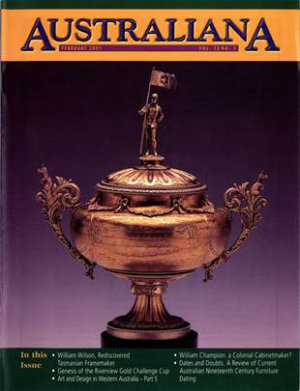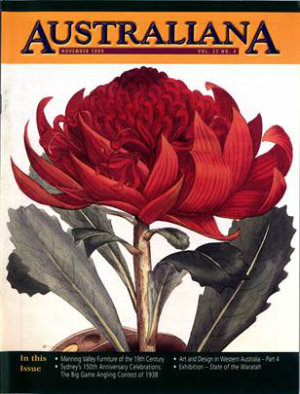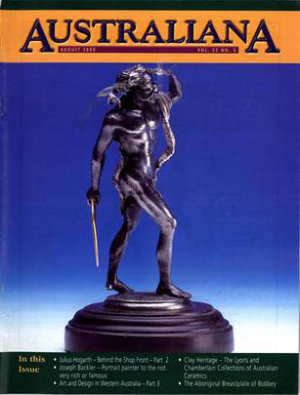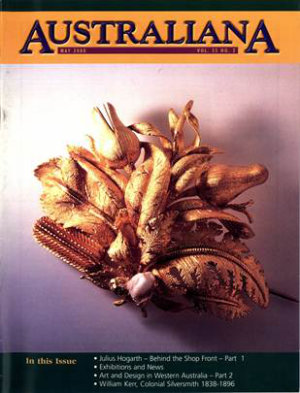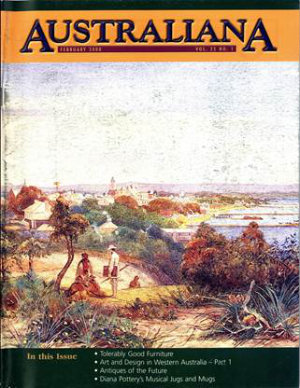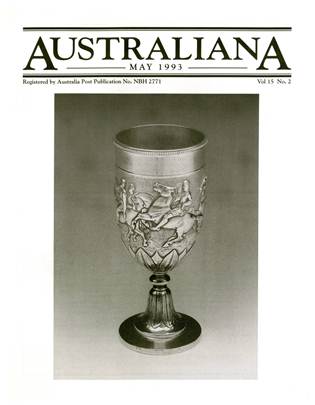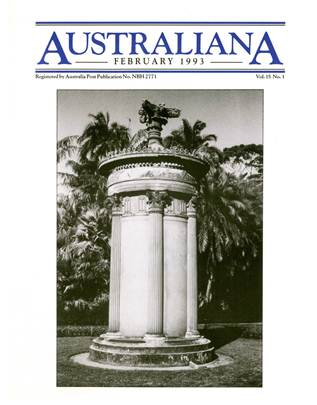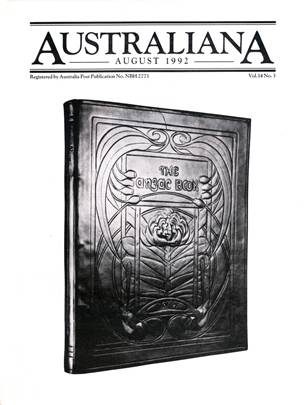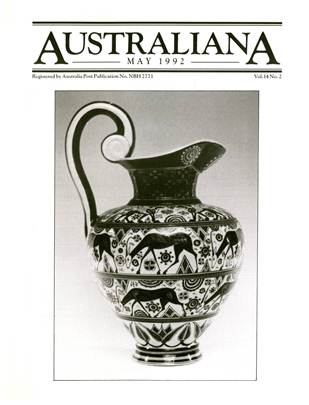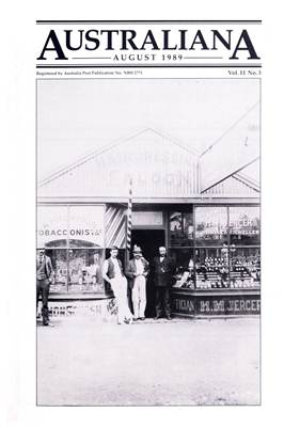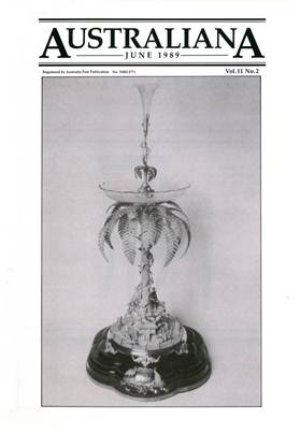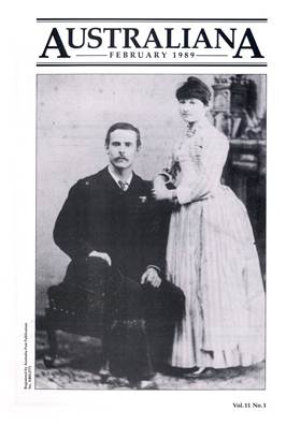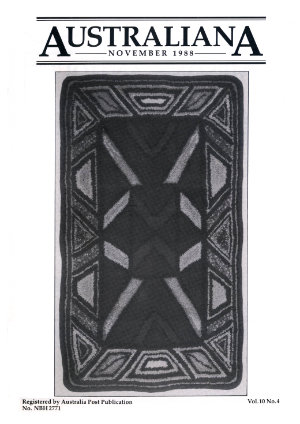BOOK REVIEW BY WARWICK OAKMAN
Mark R. Cabouret, Out From The Shadows
John Mitchell Cantle 1849 – 1919 Australia’s First Native Born Ornithological Draughtsman.
The Australiana Society Inc, Bondi Junction, NSW, 2023. Soft cover,
175 pages, 683 colour & sepi...
Members of the Australiana Society have many distinctions. Our president Colin Thomas has already praised the work of Di Dorothy Erickson AM on receiving her Member of the Order of Australia award, but at least two more Australiana Society members were honoured. Julian Bickersteth AO and Dr Judith McK...
Spanish monks established the Benedictine mission at New Norcia in Western Australia in 1846. Following on from her article last year on Isidro Oriol,1 Dr Dorothy Erickson concludes her series on the Spanish craftsmen who worked on buildings and furniture for the monastic community. Here she examines...
Most craftsmen who emigrated to colonial Australia were trained in the English, Scottish, Irish or German traditions. In Western Australia, several Spanish craftsmen were attracted by the monastery established by their compatriot Bendictine monks at New Norcia. Western Australian craftsmen, mostly using jarrah ...
Dr Erickson concludes her story of the professional women artists who commenced working in Western Australia before World War I. All were born in South Australia or England, coming to Western Australia later, most as young adults and often with other family members. Their careers began in the heady years of the...
Continuing our story of the women artists working in Western Australia before World War I, we will now turn to three ‘Angels’ who came, saw and conquered, but did not stay. They were all single, peripatetic, somewhat bohemian and left their mark in several societies. Marie Anne Tuck (1866–1947); Florence ...
Continuing our story of the women artists who worked in Western Australia,1 we examine the careers of those who exhibited in the Paris and Glasgow international exhibitions at the turn of the century – when Western Australia was in the midst of a Gold Rush. While Lady Forrest’s work was exhibited in a separ...
Dr Dorothy Erickson begins a new series of articles on Western Australian art, exploring the production and themes adopted by women artists in the 19th century, and putting their work into its social and artistic context.
This is the tale of a table and desk, the first an historic table made by a master craftsman who as an apprentice is reputed to have made one of Queen Victoria’s wedding presents as well as a chair presented to the Queen of Spain. This man made our table in Western Australia from native jarrah for a well-know...
Miguel Mackinlay (1894–1959) arrived in Western Australia as a child in 1906 and trained as an artist. He sailed for London in 1914 and was caught up fighting and sketching in the Great War. Dorothy Erickson concludes her three-part series on the painter who settled in England after the war and never returned...
The artist Miguel Mackinlay/McKinlay has been variously described as Spanish, Scottish and Australian and all three descriptions are partially correct. Born in the province of Guadalajara in Spain to a Spanish mother and Scottish father, he arrived in Western Australia as a ten year old and undertook his major ...
It is timely to showcase the lively drawings of an Australian on the Western Front in the Great War 100 years ago. Although the young man fought in those terrible trenches, most of his images have a quiet dignity. Only in the heat of a battle in which he was wounded, do you feel the horror of it all; his franti...
Trove and family histories have recently revealed information about Edwin Foss Duffield (1846–1922), a colonial-born craftsman of distinction in Western Australia. He commenced working in Fremantle in the late 1860s as a cabinet maker and undertaker, and a number of pieces of furniture from his workshop survi...
George Richard Addis (1864–1937) is best known as one of Western Australia’s leading late 19th- and early 20th-century goldfields jewellers, whose Western Australian work has been documented by Dorothy Erickson.1 Many jewellers however worked in different colonies, and here Michel Reymond records for the fi...
Dorothy Erickson documents the life and work of Mattie Furphy (1878–1948), a Victorian who moved to Perth in 1902 to become a prominent Western Australian artist and designer.
Published as the first of two hardcover volumes (the second will cover the period from 1950 to now), this is Dr Dorothy Erickson’s most ambitious publishing venture. Exploring the work of designers and makers in Western Australia since the founding of the Swan River Colony in 1829 until 1969, it is her most s...
This spectacular exhibition of jewellery spanning cultures and millennia is billed as the most ambitious jewellery exhibition the Powerhouse Museum (part of the Museum of Applied Arts and Sciences) has ever staged. With 700 exhibits drawn from public and private collections across Australia, it takes several vi...
dorothy erickson’s research for her new book Inspired by Light and Land: Designers and Makers in Western Australia 1829–1969 has uncovered more information about objects made in Western Australia and their makers. Her previous articles published in Australiana on Amy Harvey, William Howitt, Charles May and ...
Former Prime Minister Julia Gillard, in her misogyny speech on 9 October 2012, was not the first to react to men allegedly putting down women’s activities. A century ago, English designer and artist C R Ashbee – his business damaged by low-priced competition from amateur women artists – condescendingly re...
As the daughter of a botanist, botanical artist and writer for whom species and genera have been named, and currently researching the women artists of Western Australia, I was really interested to review what looked to be a lovely book. The attractive layout designed by Kathryn Wright has numerous illustrations...
